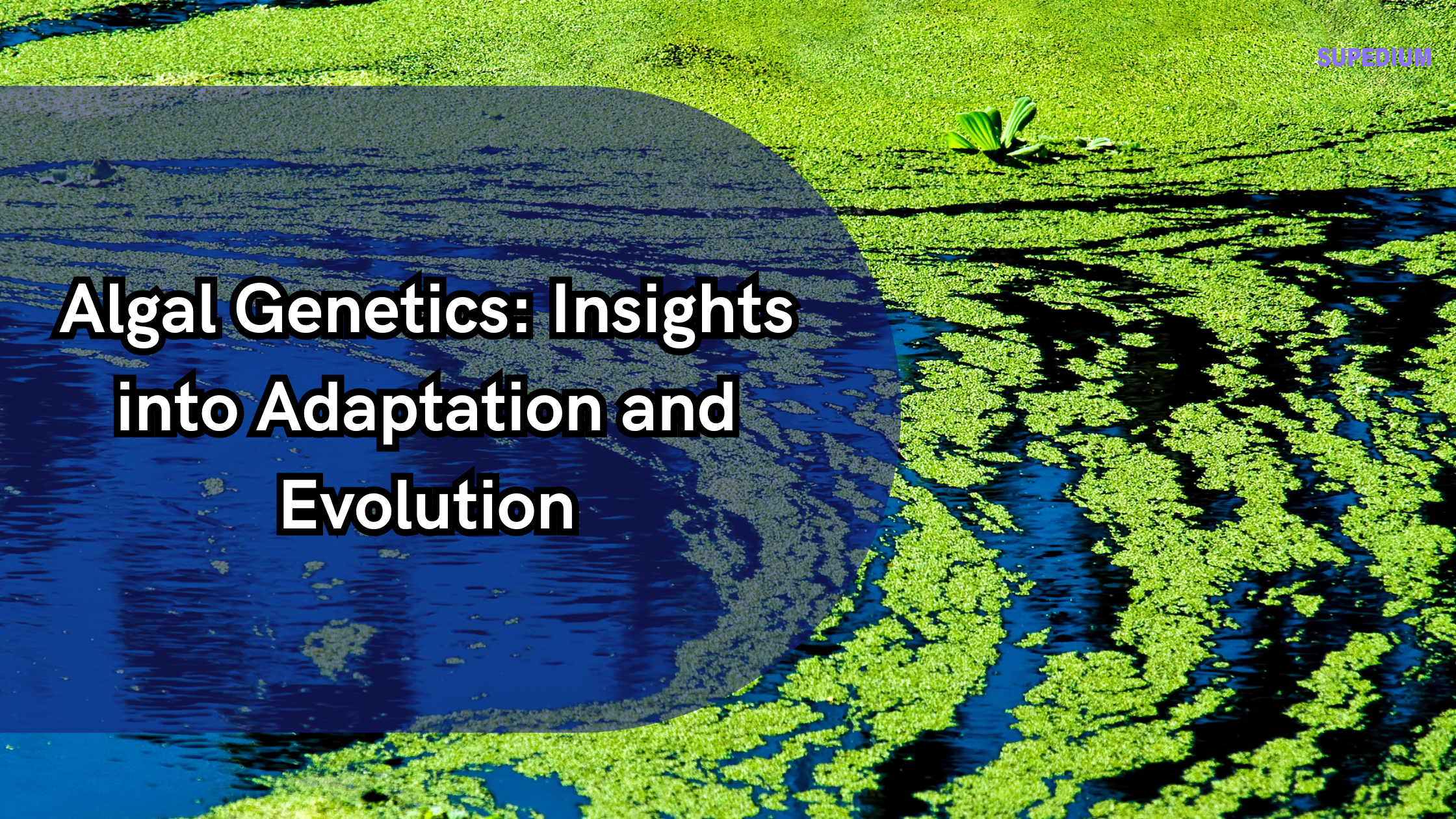Table of Contents
![]()
I. Introduction
Algae are a diverse group of photosynthetic organisms found in various aquatic environments, ranging from oceans and freshwater bodies to terrestrial habitats. They play crucial roles in ecosystems as primary producers, contributing significantly to global oxygen production and forming the basis of aquatic food webs. Understanding the genetics of algae provides valuable insights into their adaptation mechanisms and evolutionary processes, highlighting their ability to thrive in diverse and often extreme environments.
II. Algal Genetic Basics
A. Structure and Function of Algal Genomes
Algal genomes vary widely in size and complexity across different species. While some algae have relatively simple genomes, others possess highly complex ones with extensive gene families. Algae typically have both nuclear and organellar genomes, including chloroplast genomes, which are crucial for photosynthesis. Chloroplast genomes often exhibit unique features, such as a reduced size and a high level of gene conservation compared to nuclear genomes.
B. Genetic Variation in Algae
Genetic variation in algae arises from various sources, including point mutations, insertions, deletions, and genetic recombination. Additionally, horizontal gene transfer—a process where genes are transferred between organisms outside of traditional reproduction—plays a significant role in algal evolution. This genetic variability underpins algae’s ability to adapt to changing environments and contributes to their evolutionary success.
III. Adaptation Mechanisms in Algae
A. Environmental Stress Responses
Algae encounter a range of environmental stresses, including variations in light intensity, temperature extremes, and nutrient availability. They have evolved diverse strategies to cope with these stresses:
- Light Intensity and Quality: Algae can adjust their photosynthetic machinery and pigment composition to optimize light absorption. For instance, under high light conditions, algae may produce protective pigments or adjust the composition of light-harvesting complexes to prevent damage from excess light.
- Temperature Extremes: Algal species exhibit a wide range of thermal tolerances. Thermophilic algae, for example, have evolved heat-stable proteins and enzymes that function optimally at high temperatures, while psychrophilic algae possess adaptations that enable them to thrive in cold environments.
- Nutrient Availability: Algae often experience fluctuations in nutrient availability, particularly nitrogen and phosphorus. They have developed mechanisms to optimize nutrient uptake, storage, and recycling. For instance, some algae can switch between different metabolic pathways depending on nutrient availability.
B. Genetic Basis of Adaptation
The genetic basis for these adaptive responses involves changes in gene expression and regulation. Key genetic pathways and networks, such as those regulating stress response proteins, metabolic adjustments, and signaling pathways, play crucial roles in enabling algae to adapt to environmental changes. For example, genes involved in the synthesis of stress-responsive proteins, such as heat shock proteins, are often upregulated in response to extreme temperatures.
C. Case Studies
- Adaptations to High-Salinity Environments: Marine algae, such as certain species of Dunaliella, have developed mechanisms to cope with high-salinity conditions. These include the accumulation of compatible solutes, such as glycerol, which help to maintain cellular function and osmotic balance.
- Tolerance to Extreme Temperatures: Algae living in polar regions, like those of the genus Chlamydomonas, exhibit unique adaptations such as antifreeze proteins and membrane modifications that protect against freezing and extreme cold.
IV. Evolutionary Insights from Algal Genetics
A. Phylogenetics and Evolutionary Relationships
The study of algal genetics provides insights into the evolutionary relationships between different algal groups. Molecular phylogenetic methods, including the analysis of ribosomal RNA genes and protein-coding sequences, have helped clarify the evolutionary history of major algal lineages. This research has revealed the complex history of algal diversification and the influence of environmental factors on their evolution.
B. Evolution of Key Traits
Algae have evolved a variety of key traits through evolutionary processes:
- Photosynthesis and Pigment Evolution: The evolution of photosynthesis in algae involved the acquisition of different pigment systems, such as chlorophylls and carotenoids, which optimize light capture across a range of light conditions.
- Structural Adaptations: Algae have also evolved structural adaptations, such as modifications to their cell walls and flagella, to enhance their survival in diverse environments. For example, the development of silica cell walls in diatoms provides mechanical protection and aids in buoyancy.
C. Evolutionary Patterns and Processes
Convergent evolution is a significant pattern observed in algae, where unrelated lineages independently develop similar traits in response to similar environmental pressures. Adaptive radiation is another evolutionary process observed in algae, where rapid diversification occurs to exploit different ecological niches.
V. Genomic and Genetic Tools in Algal Research
A. Sequencing Technologies
Advancements in sequencing technologies have revolutionized algal genetics research. Whole-genome sequencing provides comprehensive insights into algal genomes, while RNA sequencing enables the analysis of gene expression profiles under various conditions. These technologies facilitate the identification of genes involved in adaptation and evolutionary processes.
B. Genetic Manipulation Techniques
Genetic manipulation techniques, such as CRISPR/Cas9, have enabled precise editing of algal genomes, allowing researchers to study gene function and regulatory mechanisms. The creation of transgenic algae has furthered our understanding of gene function and facilitated the development of algae with desirable traits for biotechnology applications.
C. Bioinformatics Approaches
Bioinformatics tools are essential for analyzing and interpreting large-scale genetic data. Comparative genomics allows researchers to identify conserved and unique genes across different algal species, while gene expression analysis helps to elucidate the regulatory networks involved in adaptation and evolution.
VI. Applications of Algal Genetics
A. Environmental and Ecological Implications
Understanding algal genetics has significant environmental implications. Algae play a role in bioremediation, where they are used to clean up pollutants from contaminated environments. Additionally, research into algal blooms helps in managing their impacts on ecosystem health and preventing harmful algal bloom events.
B. Industrial and Biotechnological Uses
Algae have diverse industrial applications, including biofuel production, where their lipid content is converted into renewable energy sources. Algae are also used in pharmaceuticals and cosmetics, benefiting from their bioactive compounds and pigments.
C. Conservation and Biodiversity
Algal genetic research contributes to conservation efforts by identifying and preserving genetic diversity within algal populations. This diversity is crucial for maintaining ecosystem stability and resilience in the face of environmental changes.
VII. Future Directions and Research Frontiers
A. Emerging Technologies and Methods
Future research in algal genetics will likely be driven by advancements in synthetic biology, which enable the design and construction of novel algal strains with tailored properties. High-throughput screening and functional genomics will further enhance our ability to explore gene function and adaptation mechanisms.
B. Integrative Approaches
Combining genetics with ecology and physiology will provide a more comprehensive understanding of algal adaptation and evolution. Systems biology approaches, which integrate genetic, transcriptomic, and proteomic data, will help elucidate the complex interactions between genetic and environmental factors.
C. Challenges and Opportunities
Despite the progress made, challenges remain in understanding the full extent of genetic diversity and functional adaptation in algae. Addressing these gaps will be crucial for leveraging algal genetics in biotechnology and environmental management.
VIII. Conclusion
The study of algal genetics offers valuable insights into the mechanisms of adaptation and evolution in these diverse organisms. By exploring their genetic makeup and adaptive strategies, we gain a deeper understanding of how algae respond to environmental changes and evolve over time. Continued research in this field holds promise for advancing our knowledge of algal biology and applying this knowledge to address environmental and industrial challenges.
Share This


